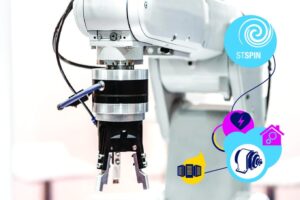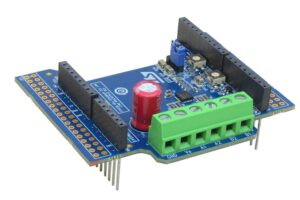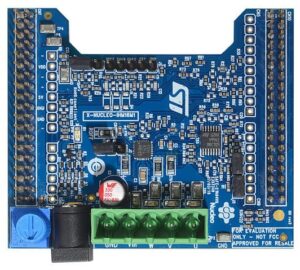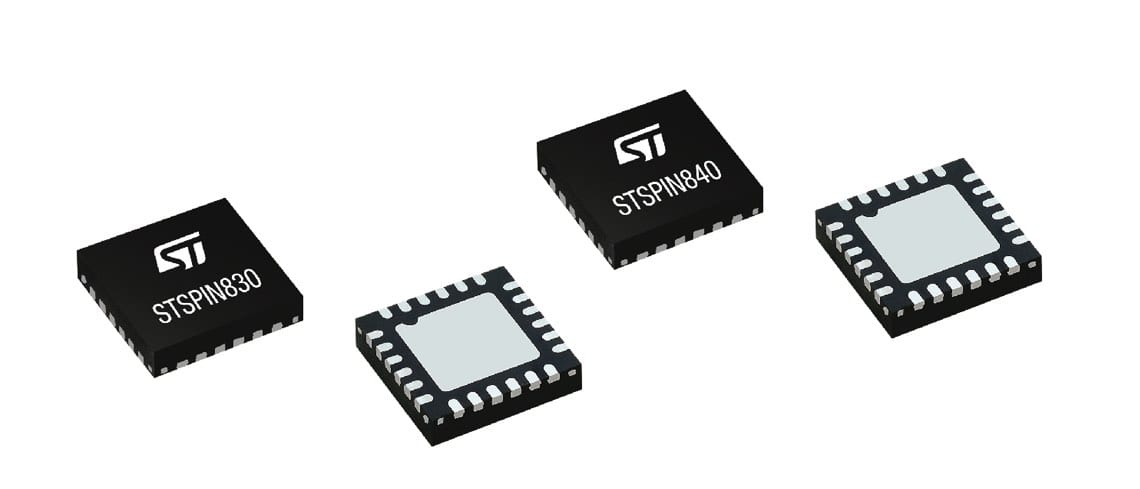A few weeks ago, we launched the STSPIN830 and the STSPIN840, and we decided to dig deeper into what makes these two components unique. The STSPIN830 is also one of the prominent devices at the STM32 Motor Control workshop, with labs using its development board to assist attendees as they navigate the ST ecosystem. Both devices also represent a new push towards markets that tend to prioritize costs, and it was thus crucial to show why we expect these two components to offer an outstanding price-to-performance ratio in the industry.
The STSPIN830 and STSPIN840 adopt the same strategy as the STSPIN820, the smallest 45 V motor driver with a resolution of up to 256 microsteps, which means that they all fully embrace miniaturization and a better performance-cost trade-off approach. However, whereas the STSPIN820 is for a stepper motor, the STSPIN830 targets Brushless DC (BLDC) motors, while brushed DC models get the STSPIN840. On a purely technical level, the latter could also drive a stepper motor, but users would lose a lot of the precision and features available in the STSPIN820. The inherent level of performance of all these models is one of their best-kept secrets. Indeed, competing components at this price range are often about what designers have to give up. With these devices, it’s all about what they gain.
The Faces of our New Motor Drivers

When our engineers designed the STSPIN830 and STSPIN840, they had one primary guiding principle: versatility. For instance, developers can drive the STSPIN830 by either using three or six inputs. Traditionally, manufacturers offer the possibility to do one, or the other, which forces designers to order a more significant number of components to fit their various applications. With the STSPIN830, they need one part number, whether they are using a traditional design that drives three half bridges or driving each of the six power switches. Having one component fit many designs to facilitate prototyping and planning. Choosing three and six inputs is also reasonably simple thanks to a MODE pin. If the MODE pin is low, meaning connected to the ground, the logic will only use three inputs, whereas setting the pin high will open all six.
The versatility of the STSPIN840 resides in the way it can drive one larger motor or two bidirectional brushed DC motors in parallel. In the first scenario, engineers can force a PARALLEL pin high, which will drive both outputs in parallel, transforming the device into a single and more powerful full bridge instead of the traditional dual full bridge. As a result, this mode can deliver up to 3 Arms and a total High Side + Low Side drain-source resistance (RDS(on)) of 500 mΩ. Driving two lower power motors, or one bigger motor, with the same part number, means a reduction in complexity since one component can work on multiple locations on the PCB. It also reduces costs since it’s possible to get a better price by buying a part in large quantity rather than two models in lower volumes.
One STSPIN830, Two Modes

BLDC motors end up in increasingly smaller devices. For instance, hard drives are still very popular, and the ability to drive three inputs is an absolute necessity when the PCB needs to be as small as possible. This is why we developed a new logic propagation on the STSPIN830 to switch from one mode to the other. This can be especially useful for manufacturers that manage a wide range of products that rely on BLDC motors.
For instance, small fans and pumps benefit from using only three inputs because every GPIO (General Purpose IO) counts, while much larger ones have the freedom of a six-input design. Thanks to the STSPIN830, a fan or pump manufacturer can use one part for all their needs. Both the STSPIN830 and STSPIN840 also have a single supply pin to power the supply stage and the logic, to help shrink the overall PCB design even more.
One STSPIN840, Two Applications
On the other hand, the STSPIN840 can significantly simplify the design of ATMs, service robots, or vending machines, for instance. These systems use multiple motors throughout their PCB. In the case of the banking application, there are motors to take cash, checks, or envelopes, sort them out, count them, store them, and give back receipts, money, and a card. Being able to use one model of motor control instead of a variety of part numbers is a massive benefit for engineers.
Similarly, when it comes to service robots, the STSPIN840 represent the perfect fit for wheels driving since designers can decide whether to drive two wheels simultaneously with one STSPIN840 or use two devices, one for each wheel, thus exploiting the parallel mode feature and reusing the same control firmware.
As a result, designers don’t have to worry about learning the complexities of multiple components. They can prototype their hardware faster, and even reuse some of their code. Additionally, both the STSPIN830 and STSPIN840 have a standby pin that drastically decreases the power consumption of the device to 45 µA, which is fundamental for applications that spend a lot of time in sleep mode.
Start Here

The best way to start experimenting with these two motor control drivers is to get their respective STM32 Nucleo expansion board. The X-NUCLEO-IHM16M1 integrates the STSPIN830, and it is one of the boards that we use in our workshops. It’s compatible with the X-CUBE-SPN16, a software extension that helps take advantage of three-phase motor drivers by offering drivers, libraries, and even application examples as well as binaries for a series of Nucleo boards, so developers can drag and drop their application to start playing with the STSPIN. The board is also compatible with our Motor Control SDK (X-CUBE-MCSDK) to help engineers take advantage of Field Oriented Control applications. Similarly, the X-NUCLEO-IHM15A1 integrates the STSPIN840 and developers can use the X-CUBE-SPN15 to quickly take advantage of the component’s features and load application examples.
